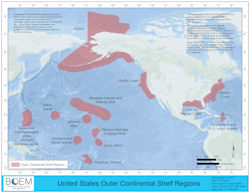SEMS Overview, Goals and Objectives
Overview
The Outer Continental Shelf Lands Act (OCSLA), enacted by Congress in 1953, declared that it is the policy of the United States to assure that operations on the OCS — all submerged lands lying seaward of state coastal waters which are under U.S. jurisdiction — are conducted safely by well-trained personnel and uses technology, precautions, and techniques to mitigate:
- blowouts, loss of well control, fires, or spillage, physical obstruction to other users of the waters or subsoil and seabed;
- occurrences that may cause damage to the environment or to property; and
- occurrences that endanger life or health.
What is SEMS?
As a result of the Deepwater Horizon explosion and oil spill catastrophe in 2010, 30 CFR 250 Part 550 was published to establish a Safety and Environmental Management System (SEMS).
Deepwater Horizon Oil Disaster: A Survivor's Story
The primary focus of the SEMS is to promote an operator-driven system that continually improves safety culture and safety practices within the industry.
Ultimately, a SEMS program is intended to:
- Focus attention on the role of human error and poor organization in accidents
- Drive continuous improvement in the offshore industry's safety and environmental records
- Encourage the use of performance-based operating practices
- Collaborate with industry in efforts that promote the public interests of offshore worker safety and environmental protection
Knowledge Check Choose the best answer for the question.
1-1. What is the focus of the SEMS regulations?
You forgot to answer the question!

